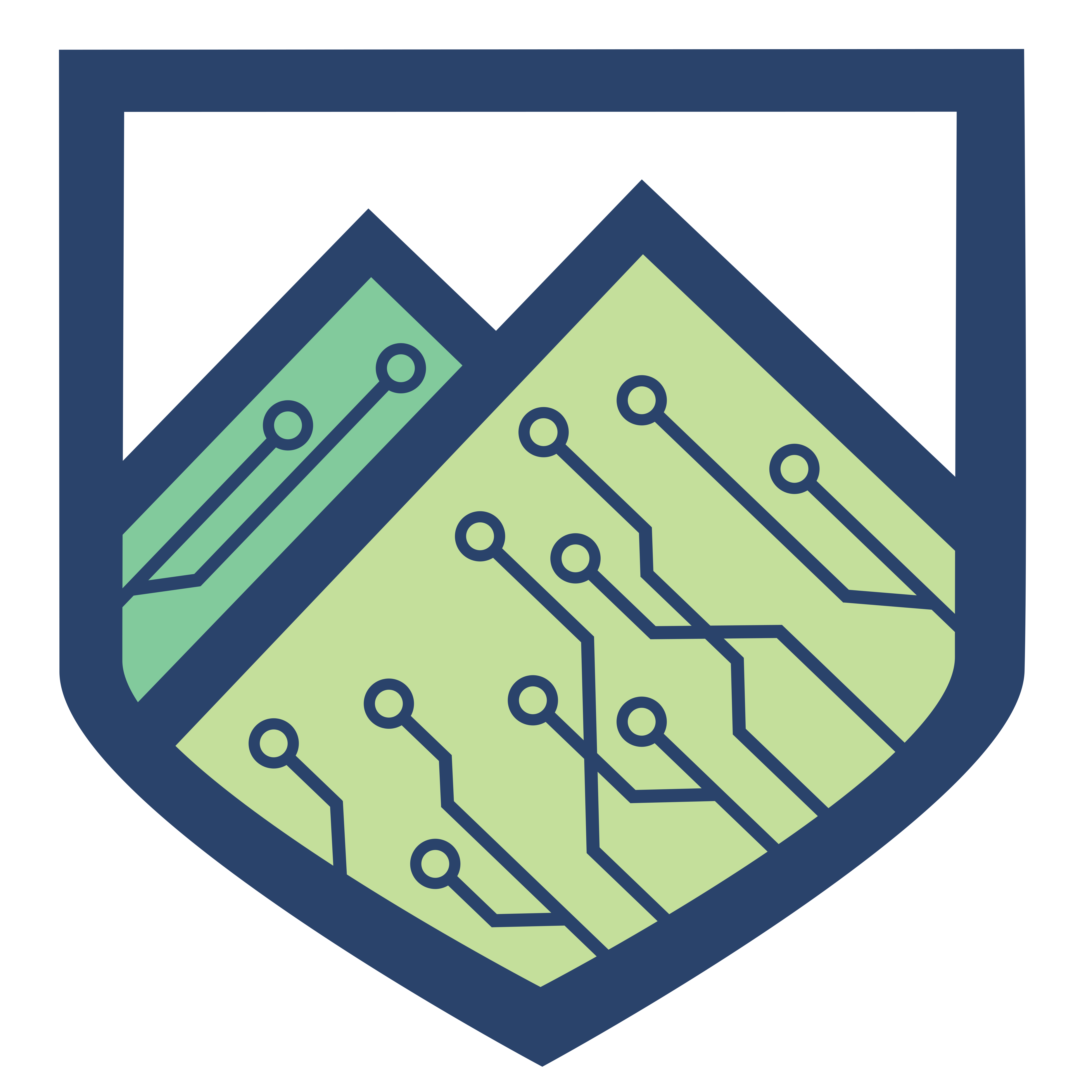I’m the creeper; catch me if you can!
October 2nd, 2023
Author: Clare McCaffrey
A Virus!
“I’m the creeper; catch me if you can!” Coming with its own catchphrase, the Creeper, widely known as the first computer virus, hopped from hard drive to hard drive, leaving this message.

“A piece of code that is capable of copying itself and typically has a detrimental effect, such as corrupting the system or destroying data” — this is the definition of what is considered a computer virus today. This has called into question the consideration of the Creeper as a computer virus. The Creeper did nothing but leave this message—an annoyance, of course—but it didn’t steal or destroy data, cause the inoperability of mainframe computers, or demand a ransom. In fact, it was never meant to leave the company it was created within, BBN. It accidentally found its way into Digital Equipment Corporation’s mainframe computers, displaying its taunting message.
A Little Context
Though the original idea of a self-replicating computer program cannot be soley attributed to Bob Thomas, he was the programmer who created the Creeper. In 1971, while Thomas was working for Raytheon BBN Technologies, he developed an experimental program to see if he could create and demonstrate a computer program that could replicate itself and move to different systems.

Image: https://scoobydoo.fandom.com/wiki/Creeper_(Scooby-Doo,_Where_Are_You!)
He ended up naming it the Creeper, after a monster in the show Scooby Doo!
Bob Thomas had made the Creeper program with no malicious intent. Instead, he wanted to determine the possibility of developing a program that could spread between computers — whether or not he achieved this goal is debatable.
Creeper didn’t replicate itself as much as it just hopped around different computers. In an effort to minimize damage in the experiment, the Creeper took measures to remove itself from previously infected computers so that it wouldn’t cause issues. The Creeper virus worked by infecting one computer and causing it to print a file. Then, while looking for another TENEX system (TENEX is an operating system that BBN created in 1969), it stopped that command.

Image: https://www.avg.com/en/signal/computer-worm-vs-virus
The Creeper virus was written in PDP-10 assembly language and used ARPANET, the predecessor of the Internet as we know it today. The Advanced Research Projects Agency Network (ARPANET) was the first public packet-switched computer network. It was first used in 1969 and finally decommissioned in 1989. ARPANET’s main use was for academic and research purposes.
Once a new TENEX system was found, it would establish a connection with that computer, remove itself from the previous system, and so on. After it’s done with a system, its final effect is to display its message.
So What?
The Creeper virus never left its home at BBN, but it did inspire more research! Thomas’ colleague, Ray Tomlinson, ended up making a complimentary program called The Reaper. This program moved through the internet and replicated itself, with its purpose being to find copies of Creeper and log them out. With the Creeper being considered the first computer virus, the Reaper ended up being the first anti-virus! Both of these programs were the first to demonstrate how applications can automatically move from computer to computer, a huge development in computer technology.
How to protect yourself from a virus
The threat of computer viruses and malware is more common place than ever. As demonstrated by the Creeper programs, the world of computer security is constantly evolving. To safeguard your computer and data from modern viruses and malware, consider the following best practices:
- Install reputable antivirus software and keep it up to date. Regularly scheduled scans can help detect and remove threats.
- Keep your operating system and software updated with the latest security patches. Many viruses exploit known vulnerabilities in outdated software.
- Be wary of email attachments and links, especially if the sender is unknown or the email appears suspicious. Avoid downloading or opening files from untrusted sources.
- Use strong and unique passwords for all your accounts. Consider using a password manager to keep track of complex passwords.
- Whenever possible, enable 2FA on your online accounts. This adds an extra layer of security by requiring a second form of verification in addition to your password.
- Perform regular backups of your important data to an external drive or a cloud-based service. In case of a virus or other data loss incidents, you can restore your files.
Citation
Bales, Rebecca. “The First Computer Virus of Bob Thomas Explained: Everything You Need to Know.” History-Computer, Aug. 2023, history-computer.com/the-first-computer-virus-of-bob-thomas.
“A Brief History of Computer Viruses and What the Future Holds.” www.kaspersky.com, 19 Apr. 2023, www.kaspersky.com/resource-center/threats/a-brief-history-of-computer-viruses-and-what-the-future-holds.
“Creeper: The First Computer Virus.” WhiteBlueOcean, www.whiteblueocean.com/newsroom/creeper-the-first-computer-virus.
Wikipedia contributors. “TENEX (Operating System).” Wikipedia, Aug. 2023, en.wikipedia.org/wiki/TENEX_(operating_system).
Wright, Gavin. “ARPANET.” Networking, Nov. 2021, www.techtarget.com/searchnetworking/definition/ARPANET#:~:text=The%20U.S.%20Advanced%20Research%20Projects,for%20academic%20and%20research%20purposes.
